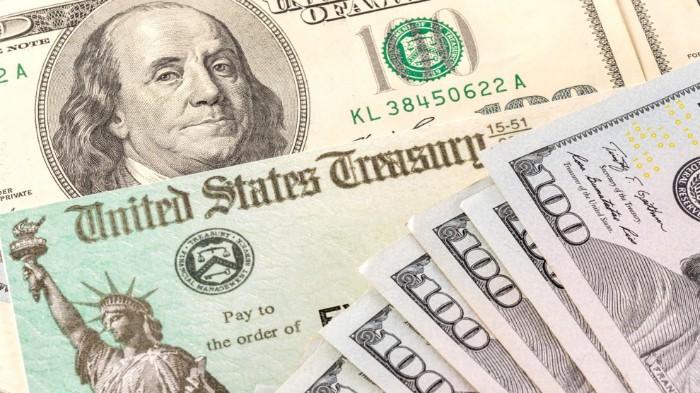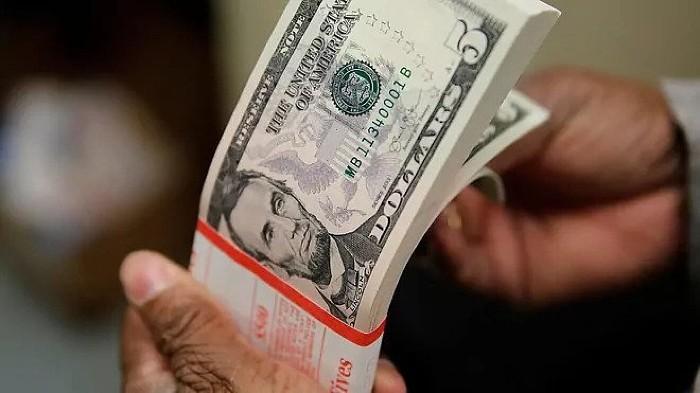What Is a Plus-Up Payment
Apr 28, 2023 By Susan Kelly
What is a plus-up payment and how can it help you? Financial literacy has never been more important, especially in financial hardship.
A plus-up payment offers extra money for recipients of certain federal benefits or tax refunds that could be used to cover essential household expenses or improve your financial health.
From eligibility criteria to the benefits associated with this scheduled payment, this blog post covers everything you need to know about plus-up payments.
Overview of Plus-Up Payments and What They're Used For
A plus-up payment is a financial transaction that sends additional funds to an existing account, usually after the initial payment has already been made. It’s typically used to make up for any amount shorted during the original payment process or to add extra funds as a bonus.
Plus-up payments can help individuals and businesses account for unforeseen costs or even provide extra funds to take advantage of special offers.
Plus-up payments can be made through various methods, including cash, check, credit card, PayPal, ACH transfer, wire transfer, and more. Depending on the chosen method, plus-ups may require additional fees, such as processing and foreign transaction fees.
Plus-up payments are especially useful if you need to make up a certain amount of money that was previously underpaid or if you want to take advantage of a special offer without having to pay the full cost upfront.
They can also be used for budgeting purposes, as it allows you to keep track of all incoming and outgoing funds without having to issue multiple payments. Whatever the reason, plus-up payments are a convenient and cost-effective way to keep track of finances and take advantage of special offers.
Plus-up payments are an easy, straightforward way to manage your finances. Whether you need to make up for shorted funds or take advantage of special offers, plus-ups are a great way to ensure you get the most out of your money.
IRS plus up payment

Plus-up payments are also commonly used by the Internal Revenue Service (IRS) to send additional funds to taxpayers who have already received their tax refunds.
This is helpful for those who may have miscalculated their taxes and owe more money than they initially anticipated. The IRS will send a plus-up payment to cover any shorted amount or add additional funds as a bonus.
The IRS also uses plus-up payments to correct any miscalculations regarding tax credits or deductions so taxpayers can receive the full amount they’re entitled to.
Plus-up payments effectively compensate for shorted funds, take advantage of special offers, or manage your finances. They are easy to set up and can be completed quickly with various payment methods. Plus-up payments make managing your finances simpler and more efficient.
Benefits of Receiving a Plus-Up Payment
Plus-up payments offer several benefits for those who receive them.
First, they can help cover any shorted amount you may have experienced when making initial payments. Plus-ups also provide an extra boost if you need to take advantage of a special offer, as they allow you to avoid paying the full cost upfront.
Plus-up payments are also helpful for budgeting, as they help you keep track of all incoming and outgoing funds without having to issue multiple payments. This can be especially helpful if you’re trying to save money or manage your finances more effectively.
Plus-up payments are convenient and cost-effective, ensuring you get the most out of your money.
How to Calculate Your Potential Plus-Up Payment
Knowing how much you might receive in advance can be helpful if you're expecting a plus-up payment from the IRS. The amount of your plus-up payment is determined by your total tax refund and the amount of money owed after filing taxes.
For example, if your total tax refund was $500, but you owed $200 after filing taxes, your plus-up payment would be $300.
It’s important to note that the IRS will only issue a plus-up payment if it is more than the amount of money owed in taxes. You may not receive a plus-up payment if you owe more than the initial tax refund.
The IRS also pays out plus-up payments in lump sums, which may take a few weeks to arrive after filing taxes. However, you must make up for any underpaid funds or take advantage of special offers quickly and conveniently. In that case, you can always explore options such as cash, check, credit card, or direct deposit.
Plus-up payments are a great way to manage your finances and take advantage of special offers. They are easy to set up and can be completed quickly with various payment methods. Plus, they offer several benefits, such as helping you cover any shorted amount you may have experienced when making initial payments, taking advantage of special offers, and budgeting effectively.
How to Use a Plus-Up Payment When Filing Taxes

When filing taxes, you can use a plus-up payment to cover any additional money owed or as a bonus. Plus-ups are especially helpful if you have miscalculated your taxes or need to compensate for underpaid funds.
To use a plus-up payment when filing taxes, first, calculate the tax refund amount you expect. Then, calculate the amount of money owed after filing taxes. Once you have both numbers, subtract the amount owed from the tax refund to determine your plus-up payment amount.
For example, if your total tax refund was $500 and you owe $200 after filing taxes, your plus-up payment would be $300.
Once you have calculated your plus-up payment amount, you can use it to compensate for any underpaid funds or take advantage of a special offer. The IRS will issue the funds in lump sums, which may take a few weeks to arrive after filing taxes.
Plus-ups are an easy and convenient way to manage your finances and take advantage of special offers. They’re also helpful for budgeting, as they help you keep track of all incoming and outgoing funds without having to issue multiple payments.
Understanding what a plus-up payment is, how to calculate it, and how to use it when filing taxes can ensure you get the most out of your money.
FAQs
What is a plus-up payment?
A plus-up payment is an additional payment from the Internal Revenue Service (IRS) that may be issued to those who have already received their Economic Impact Payment. This "plus-up" amount could reflect your eligible 2020 Recovery Rebate Credit or a higher EIP amount than you originally received.
When will I get my plus-up payment?
Plus-up payments can be issued at any time. If eligible, the IRS will mail a check or electronically pay directly to your bank account. It is important to note that if you received your EIP as a paper check and are due a plus-up amount, it will also be sent as a paper check.
How am I eligible for a plus-up payment?
If you are eligible to receive a plus-up payment, the IRS will mail you a letter informing you of your eligibility. The letter will also include instructions on how to claim or verify any additional amounts due. You are only eligible for a plus-up payment if you have received such a letter.
Conclusion
Plus-up payments are critical to the federal stimulus package designed to help Americans. It provides extra financial assistance to those who need it the most, including low-income households and those enrolled in several tax benefit programs.
Although the amount granted may not be enough to cover significant expenses, it is still beneficial for making ends meet in times of financial difficulty.

Mar 06, 2023 Triston Martin

Jan 06, 2023 Triston Martin

Jan 24, 2024 Triston Martin

Dec 09, 2023 Susan Kelly

Jan 25, 2024 Susan Kelly

Jan 28, 2024 Triston Martin